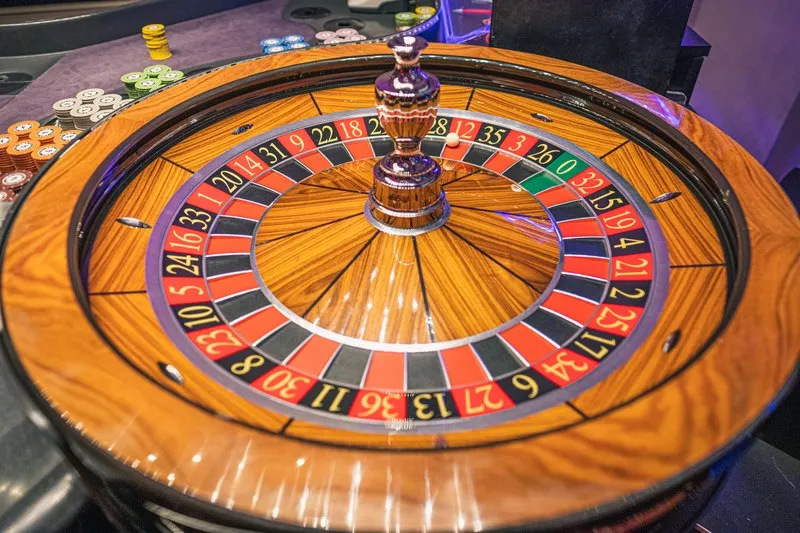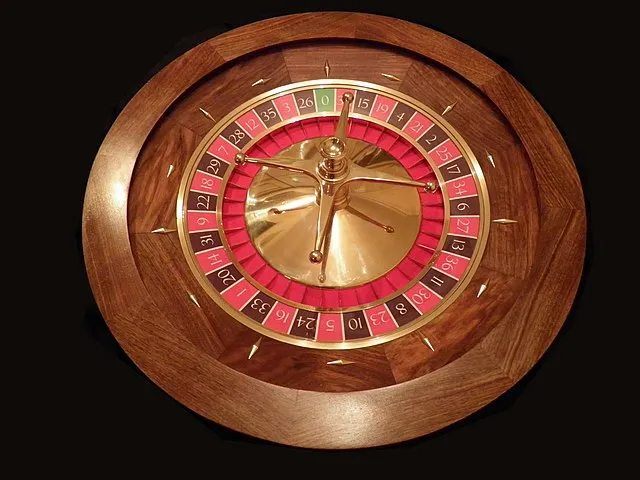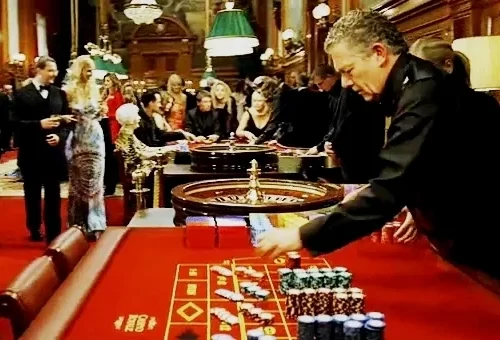Roulette

There is no doubt that when you think about Casinos, one of the first things that comes up to your mind is the Roulette Game. And maybe a 007 movie!
A bit of History
Roulette was created fairly recently in 18th century and it was first spotted in France. At the beginning it was slightly different than today, but very soon the wheel started to become quite familiar. The numbers could also include “zero” and “double zero”, although the “double zero” version quickly spread in the US, while the “single zero” became the signature wheel of Monte Carlo after 1860, the year in which Germany banned the game and the Blanc family moved to the last legal Casino open at that time.
Rules of Play
There are simple rules to be known and we list them here below.
But first and foremost, how many players are allowed on a Roulette table? The number of players can vary from one to how many manage to be around the game table.
How does the Table Roulette is composed? There is a table with a carpet on which the game board is drawn. There is the cylinder and a ball. A rake for the “Croupier”. The gaming chips, small plastic discs used in lieu of currency in casinos.
But let’s move on step by step.
The game board

The game board is painted on a sturdy green cloth. Gold lines divide it into a large number of sections, each of which bears a number, symbol or writing on it. The players place their chips on the tableau, in different positions depending on the type of bet they wish to make. Sections numbered 1 to 36 are colored black or red to match the color of the sections into which the cylinder is divided.
The table is usually mahogany and there is the game board at one end and the cylinder at the other.
The cylinder
The cylinder basin is a bowl-shaped wooden basin embedded in the table and it is the fixed part that surrounds the rotating cylinder. The upper edge is known as the “bank” and the opposite side is the “downward bank”. The latter is divided into eight equal segments, in the center of each of which there is a metal obstacle in the shape of a rhombus. In the center of the basin, hidden from the wheel, there is the steel pin around which the cylinder rotates.

This cylinder is usually a solid wood disc. In the center it carries a metallic ornament made up of two crossed bars which is used to make it rotate. The circumference of the cylinder is divided by colored strips into 37 numbered sections of equal size. The sections (in the European Roulette) are numbered from 0 to 36 and consecutively there are never more than two odd or even numbers.
The ball is made of ivory or plastic and it is about 1 or 2 centimeters in diameter.
The “Croupier”

The casino worker who is in charge of spinning the wheel, throwing the ball into it, announcing the winning number and in the distribution of bets and payouts is called the “Croupier” (or the “Dealer” in English). Due to the large size of the table, he is usually assisted by one or more colleagues whose job is to gather and divide the chips. In some major casinos there is also a house inspector who observes the game and intervenes if necessary.
Purpose of the Roulette Game
It is really simple: the player tries to anticipate the outgoing number. At the same time, he can bet in many different ways.
1) the winning number, that is the number that marks the bag in which it goes to
stop the ball.
2) a group of numbers including the winning number.
3) a characteristic of the winning number, i.e. red or black, even or odd,
pass or run.
The Casino Chips (or Gaming Chips)
As already mentioned, they are small plastic discs used in lieu of currency in casinos. They can be purchased directly at the table from the Dealer or at the Casino Office and they are of various colors. Very often when a player enters the game they are assigned one of those colors. However, there can be many bettors in crowded nights, and so players may have chips of the same color. But do not worry: no one will ever miss his own chips! And many croupiers can help around the table.
Gaming chips with a higher value usually have their value written above, while those with a lower value are plain.
How to play Roulette
The game is played with the following steps:
- the player places his bets (chips) on the table board on the numbers he prefers
- the head dealer spins the roulette wheel and throws the ball in
- players can continue betting if they wish
- when the ball is about to fall off the bank, the dealer announces the famous phrase “Rien ne va plus”
- the ball stops on one of the squares
- the head dealer announces the winning number and color
- the dealer rakes up the lost bets and pays the winners.
- if the player does not remove the winning bet, it remains on the tableau for the next game.
⇓⇓ TRY AND PLAY ROULETTE WITH US ⇓⇓
Types of Bets
There are two different types of bets that a gambler can play: Inside Bets and Outside Bets.
Inside Bets
For simplicity, inside bets can be summarised in the following table:
| Name | Description | Chip placement |
|---|---|---|
| Straight/Single | Bet on a single number | Entirely within the square for the chosen number |
| Split | Bet on two vertically/horizontally adjacent numbers (e.g. 14-17 or 8–9) | On the edge shared by the numbers |
| Street | Bet on three consecutive numbers in a horizontal line (e.g. 7-8-9) | On the outer edge of the number at either end of the line |
| Corner/Square | Bet on four numbers that meet at one corner (e.g. 10-11-13-14) | On the common corner |
| Six Line/Double Street | Bet on six consecutive numbers that form two horizontal lines (e.g. 31-32-33-34-35-36) | On the outer corner shared by the two leftmost or the two rightmost numbers |
| Trio | A three-number bet that involves at least one zero: 0-1-2 (either layout); 0-2-3 (single-zero only); 00-2-3 (double-zero only) | On the corner shared by the three chosen numbers |
| First Four | Bet on 0-1-2-3 (Single-zero layout only) | On the outer corner shared by 0-1 or 0-3 |
| Basket | Bet on 0-00-1-2-3 (Double-zero layout only) | On the outer corner shared by 0-1 or 00-3 |
Outside bets
Outside bets typically have smaller payouts with better odds at winning.All of these bets lose if a zero comes up (with one exception in the UK):
- 1 to 18 (Low or Manque), or 19 to 36 (High or Passe). A bet that the number will be in the chosen range.
- Red or black (Rouge ou Noir) A bet that the number will be the chosen color.
- Even or odd (Pair ou Impair) A bet that the number will be of the chosen type.
- Dozen bet. A bet that the number will be in the chosen dozen: first (1-12, Première douzaine or P12), second (13-24, Moyenne douzaine or M12), or third (25-36, Dernière douzaine or D12).
- Column bet. A bet that the number will be in the chosen vertical column of 12 numbers, such as 1-4-7-10 on down to 34. The chip is placed on the space below the final number in this sequence.
- Snake Bet. A special bet that covers the numbers 1, 5, 9, 12, 14, 16, 19, 23, 27, 30, 32, and 34. It has the same payout as the dozen bet and takes its name from the zigzagging, snakelike pattern traced out by these numbers. The snake bet is not available in all casinos; when it is allowed, the chip is placed on the lower corner of the 34 square that borders the 19-36 betting box. Some layouts mark the bet with a two-headed snake that winds from 1 to 34, and the bet can be placed on the head at either end of the body.
In the United Kingdom, the farthest outside bets (low/high, red/black, even/odd) result in the player losing only half of his/her bet if a zero comes up.
The House Edge
This is one of the most important topic. If you understand its value, the chances of losing all your money are dramatically lower. The house average or house edge or house advantage (also called the expected value) is the amount the player loses relative to any bet made, on average. If a player bets on a single number in the American game there is a probability of 1⁄38 that the player wins 35 times the bet, and a 37⁄38 chance that the player loses their bet.
Different House Edge With Different Roulette
| Roulette Variant | House Edge |
|---|---|
| American Roulette | 5.26% |
| European Roulette | 2.70% |
| European Roulette (En Prison/La Partage) | 1.35% |
These house edges apply to any bet you can make at the roulette table.
House Advantage: The house advantage comes from the difference between the odds that a number or combination has to occur and the payout percentages. The house advantage is 5.26% on all bets. If then the simple bets are imprisoned when the “0” appears, the house advantage over the simple bets is reduced to 1.35.
| Casino Game | House Edge (lowest) |
|---|---|
| Blackjack | ~0.50% |
| Baccarat | 1.06% |
| Craps | 1.36% |
| European Roulette | 2.70% |
| Sic-Bo | 2.78% |
| American Roulette | 5.26% |
Video Tutorial on how “Spinnning the Ball”
The Ball Throw: the croupier collects the ball from the square it landed on in the last game. If the rotation of the cylinder has slowed down, or if the casino requires that each new ball be thrown in a different direction of rotation of the cylinder, the dealer presses the cylinder with the hand that is most visible to the players (if the direction must not vary this usually occurs counterclockwise). Then, always using the same hand, the dealer quickly throws the ball on the hollow, so that it runs in the opposite direction to that of the cylinder.
The path of the ball: the ball runs fast on the upper part of the basin, that is, on the bank. As the speed decreases, it descends on the lower bank. Here it encounters rhomboidal obstacles that make it bounce in a completely random way. It then passes on the outer perimeter of the cylinder, where the opposite movement abruptly slows down its speed and jumps it here and there on the cylinder. The ball can linger above two or three neighboring numbers, it can be hit by one of the separators, or it can land in a square and bounce off it. Eventually it stops in a square.
Betting Strategies and Tactics
We have already explained that there are different groups of bets, but we can group them by numbers. In particular, on single numbers, on groups of numbers and on all numbers that have in a common feature (red or black, even or odd, high or low), the so-called simple combinations. Bets on a group of numbers are paid if any of the numbers are rolled. Bets on a simple combination are paid if a number belonging to it is rolled.
That is why, to maximise the possibility of a win, players can place a combination of bets. They have a specific name:
- en plein: on any number without touching the lines.
- à cheval: on the horizontal or vertical line that separates two numbers.
- transverse plein: on the external vertical line of the tableau next to the number line.
- en carrè: on the intersection of the four numbers
- transversal simple: on the intersection of the external vertical line with the line that separates two rows of numbers.
- columns: on any of the three boxes at the base of the columns of numbers.
- douzaine: on the appropriate space of the tableau.
- cheval columns: on the dividing line of two of the three spaces at the base of number columns.
- noir: on the space that contains the black rhombus.
- rouge: on the space that contains the red diamond.
- impair: on the space marked “impair”.
- pair: on the space marked “pair”.
- run: on the space marked “run”.
- pass: on the space marked “pass”.
A particular mention must be done for the “Zero”. The Zero can be wagered like any other number in full. It can also be used for a bet on four adjacent numbers such as 1, 2 and 3.
However, it cannot be bet on the other groups of numbers or in the game of simple combinations. The zero is therefore known as “the number of the house”. If there is a bet on a group of numbers and a zero is rolled, the bet is lost. SPECIAL CASE: If there is a bet on a simple combination and a zero comes up, in some casinos, the bet is “imprisoned”.
Imprisoned Bets
An imprisoned bet must remain on the tableau and its fate is decided by the next hit. If the simple wagered combination (red for example) comes up with the next hit, the wager is returned to the player but with no winnings. If the zero is rolled again, the rules vary: in some casinos the player loses half of the bet and the other half is returned, while in others the player loses half of the bet, while the other half remains imprisoned waiting for her fate to be decided by the next blow.
SPECIAL NOTE: Some casinos allow the dealer spinning the cylinder to be changed at the request of a player, if no one else objects. Switching is not permitted if the dealer has not made at least five games.
